Cumin
How to submit an article:
- Registered users can submit any published journal article that has a unique DOI (Digital Object Identifier) name or link to Research Hub.
- For example, you can paste the full DOI link:
https://doi.org/10.1109/5.771073or just the DOI name:10.1109/5.771073into the field above and click submit. - The person who is first to submit a valid article to Research Hub will forever be credited for it, and every article submission earns you +6 Research Points.
Related Topics
Published research studies are articles that present the findings of original research that has undergone a peer-review process and has been made publicly available in scholarly journals, books or other media.

Bioactive Compounds and Biological Activities of Turmeric (Curcuma longa L.)
2023 Jan Reference Series in Phytochemistry Jyotirmayee B, Nayak SS, Mohapatra N, Sahoo S, Mishra M, Mahalik G
Review Article Bioactive Compounds Biological Activities TurmericThrough innovative refinement, nanocurcumin, evolved from turmeric's primary component curcumin, has improved characteristics and pharmaceutical potential, particularly in drug delivery systems.
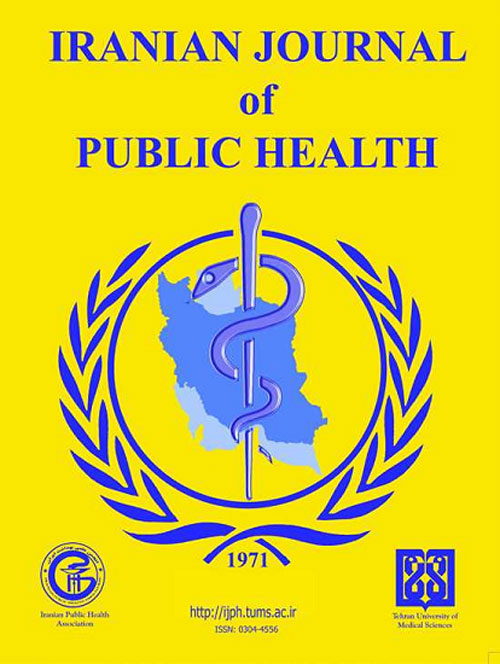
Turmeric for Treatment of Irritable Bowel Syndrome: A Systematic Review of Population-Based Evidence
2022 Jun 14 Iranian Journal of Public Health Jafarzadeh E, Shoeibi S, Bahramvand Y, Nasrollahi E, Maghsoudi AS, Yazdi F, et al.
Systematic ReviewThe application of curcumin and turmeric, due to their anti-inflammatory effects, can alleviate symptoms and improve the quality of life in people with irritable bowel syndrome.

Dietary supplements for treatment of endometriosis: A review
2022 Mar 14 Acta Biomedica Yalçın Bahat P, Ayhan I, Üreyen Özdemir E, İnceboz Ümit, Oral E
Review ArticleDietary supplements are found to be a promising complementary treatment for endometriosis, thanks to their anti-inflammatory, anti-oxidant, and immune modulatory characteristics.
Role of Curcumin in Retinal Diseases—A review
2022 Jan 11 Graefe's Archive for Clinical and Experimental Ophthalmology Chandrasekaran PR, Madanagopalan VG
Review Article Retinitis PigmentosaCurcumin, a spice used in Indian cooking, shows potential therapeutic effects in various retinal diseases, including during the COVID era.
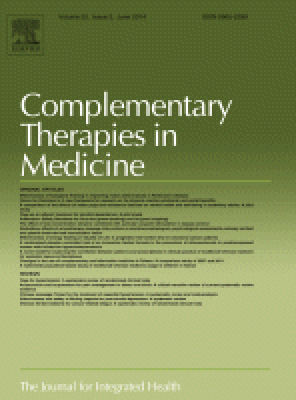
The efficacy of high- and low-dose curcumin in knee osteoarthritis: A systematic review and meta-analysis
2021 Dec Complementary Therapies in Medicine An-Fang Hsiao, Yi-Chieh Lien, I-Shiang Tzeng, Chien-Ting Liu, Sheng-Hsun Chou, Yi-Shiung Horng
Systematic Review Meta-Analysis Knee Osteoarthritis Arthritis TurmericTurmeric curcuminoids are associated with better pain relief than NSAIDs in knee osteoarthritis.
Research insights are moderated by the Research Hub team and offer an at-a-glance overview of interesting research findings.

2023 Reference Series in Phytochemistry
Through innovative refinement, nanocurcumin, evolved from turmeric's primary component curcumin, has improved characteristics and pharmaceutical potential, particularly in drug delivery systems.
Review Article Bioactive Compounds Biological Activities Turmeric
Bioactive Compounds and Biological Activities of Turmeric (Curcuma longa L.)
Jyotirmayee B, Nayak SS, Mohapatra N, Sahoo S, Mishra M, Mahalik G

2022 Iranian Journal of Public Health
The application of curcumin and turmeric, due to their anti-inflammatory effects, can alleviate symptoms and improve the quality of life in people with irritable bowel syndrome.
Systematic Review
Turmeric for Treatment of Irritable Bowel Syndrome: A Systematic Review of Population-Based Evidence
Jafarzadeh E, Shoeibi S, Bahramvand Y, Nasrollahi E, Maghsoudi AS, Yazdi F, et al.

2022 Acta Biomedica
Dietary supplements are found to be a promising complementary treatment for endometriosis, thanks to their anti-inflammatory, anti-oxidant, and immune modulatory characteristics.
Review Article
Dietary supplements for treatment of endometriosis: A review
Yalçın Bahat P, Ayhan I, Üreyen Özdemir E, İnceboz Ümit, Oral E
2022 Graefe's Archive for Clinical and Experimental Ophthalmology
Curcumin, a spice used in Indian cooking, shows potential therapeutic effects in various retinal diseases, including during the COVID era.
Review Article Retinitis Pigmentosa
Role of Curcumin in Retinal Diseases—A review
Chandrasekaran PR, Madanagopalan VG

2021 Complementary Therapies in Medicine
Turmeric curcuminoids are associated with better pain relief than NSAIDs in knee osteoarthritis.
Systematic Review Arthritis Knee Osteoarthritis Turmeric
The efficacy of high- and low-dose curcumin in knee osteoarthritis: A systematic review and meta-analysis
An-Fang Hsiao, Yi-Chieh Lien, I-Shiang Tzeng, Chien-Ting Liu, Sheng-Hsun Chou, Yi-Shiung Horng
Review Articles
Review articles summarise and critically evaluate the current state of research on a specific topic or field by synthesising multiple primary research studies.

Bioactive Compounds and Biological Activities of Turmeric (Curcuma longa L.)
2023 Jan Reference Series in Phytochemistry Jyotirmayee B, Nayak SS, Mohapatra N, Sahoo S, Mishra M, Mahalik G
Review Article Bioactive Compounds Biological Activities TurmericThrough innovative refinement, nanocurcumin, evolved from turmeric's primary component curcumin, has improved characteristics and pharmaceutical potential, particularly in drug delivery systems.

Turmeric for Treatment of Irritable Bowel Syndrome: A Systematic Review of Population-Based Evidence
2022 Jun 14 Iranian Journal of Public Health Jafarzadeh E, Shoeibi S, Bahramvand Y, Nasrollahi E, Maghsoudi AS, Yazdi F, et al.
Systematic ReviewThe application of curcumin and turmeric, due to their anti-inflammatory effects, can alleviate symptoms and improve the quality of life in people with irritable bowel syndrome.

Dietary supplements for treatment of endometriosis: A review
2022 Mar 14 Acta Biomedica Yalçın Bahat P, Ayhan I, Üreyen Özdemir E, İnceboz Ümit, Oral E
Review ArticleDietary supplements are found to be a promising complementary treatment for endometriosis, thanks to their anti-inflammatory, anti-oxidant, and immune modulatory characteristics.
Role of Curcumin in Retinal Diseases—A review
2022 Jan 11 Graefe's Archive for Clinical and Experimental Ophthalmology Chandrasekaran PR, Madanagopalan VG
Review Article Retinitis PigmentosaCurcumin, a spice used in Indian cooking, shows potential therapeutic effects in various retinal diseases, including during the COVID era.

The efficacy of high- and low-dose curcumin in knee osteoarthritis: A systematic review and meta-analysis
2021 Dec Complementary Therapies in Medicine An-Fang Hsiao, Yi-Chieh Lien, I-Shiang Tzeng, Chien-Ting Liu, Sheng-Hsun Chou, Yi-Shiung Horng
Systematic Review Meta-Analysis Knee Osteoarthritis Arthritis TurmericTurmeric curcuminoids are associated with better pain relief than NSAIDs in knee osteoarthritis.
Clinical Trials
Clinical trials are research studies that involve people and are conducted to evaluate the safety and efficacy of new treatments or interventions, such as drugs, medical devices, or behavioural therapies.
Study Protocols
Published study protocols are detailed plans that outline the objectives, methodology, statistical analyses, and organisation of a research study that have been made publicly available for others to review and use as a reference.
Presentation Slides

Review Article
Through innovative refinement, nanocurcumin, evolved from turmeric's primary component curcumin, has improved characteristics and pharmaceutical potential, particularly in drug delivery systems.
Jyotirmayee B, Nayak SS, Mohapatra N, Sahoo S, Mishra M, Mahalik G

Systematic Review
The application of curcumin and turmeric, due to their anti-inflammatory effects, can alleviate symptoms and improve the quality of life in people with irritable bowel syndrome.
Jafarzadeh E, Shoeibi S, Bahramvand Y, Nasrollahi E, Maghsoudi AS, Yazdi F, KarkonShayan S, Hassani S

Review Article
Dietary supplements are found to be a promising complementary treatment for endometriosis, thanks to their anti-inflammatory, anti-oxidant, and immune modulatory characteristics.
Yalçın Bahat P, Ayhan I, Üreyen Özdemir E, İnceboz Ümit, Oral E

Review Article
Curcumin, a spice used in Indian cooking, shows potential therapeutic effects in various retinal diseases, including during the COVID era.
Chandrasekaran PR, Madanagopalan VG

Systematic Review
Turmeric curcuminoids are associated with better pain relief than NSAIDs in knee osteoarthritis.
An-Fang Hsiao, Yi-Chieh Lien, I-Shiang Tzeng, Chien-Ting Liu, Sheng-Hsun Chou, Yi-Shiung Horng
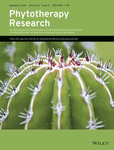
Randomised Controlled Trial
Curcumin supplements have comparable effects to placebos in alleviating symptoms of Premenstrual Syndrome and dysmenorrhea in young women.
Bahrami A, Zarban A, Rezapour H, Agha Amini Fashami A, Ferns GA
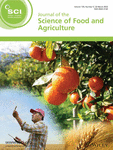
Review Article
Curcumin, derived from turmeric, exhibits an extensive range of biological and medicinal properties, including anti-inflammatory, antioxidant, and antifungal qualities.
Abd El‐Hack ME, El‐Saadony MT, Swelum AA, Arif M, Abo Ghanima MM, Shukry M, Noreldin A, Taha AE, El‐Tarabily KA
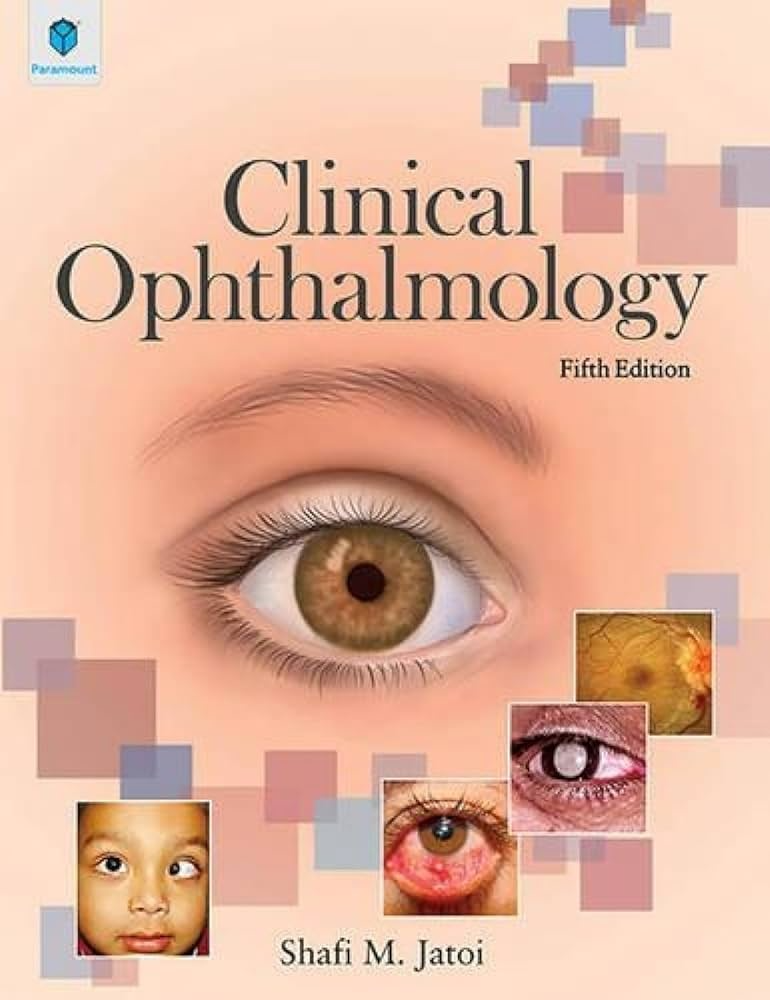
Review Article
Curcumin, with its anti-inflammatory, antioxidant, antimicrobial and antimutagenic properties, is a potential therapeutic agent for retinal diseases.
Nebbioso M, Franzone F, Greco A, Gharbiya M, Bonfiglio V, Polimeni A

Review Article
Green tea, coffee, wine, and curry have beneficial health effects due to the polyphenols they contain, which possess both antioxidant and pro-oxidant properties.
Ohishi T, Fukutomi R, Shoji Y, Goto S, Isemura M
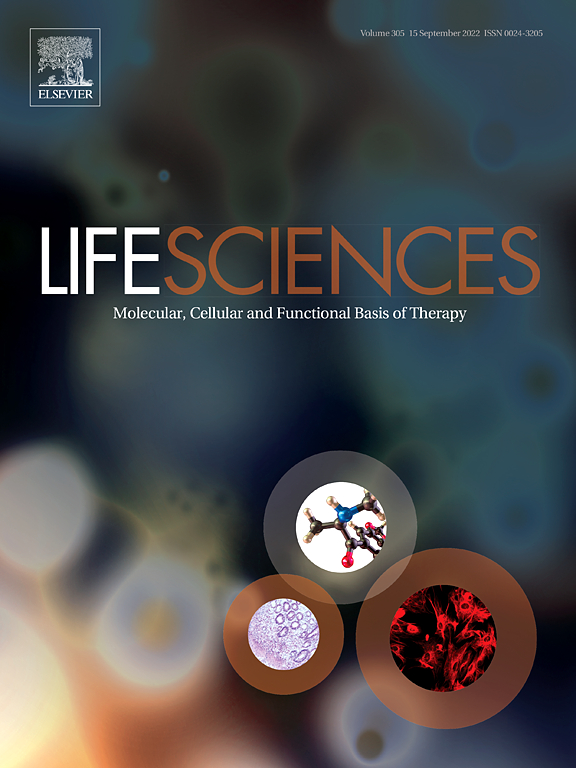
Animal Study
Curcumin, found in turmeric, exerts anticonvulsive effects by elevating serotonin levels, influencing certain receptors, and possibly reducing 5-HT7 gene expression.
Arbabi Jahan A, Rad A, Ghanbarabadi M, Amin B, Mohammad-Zadeh M
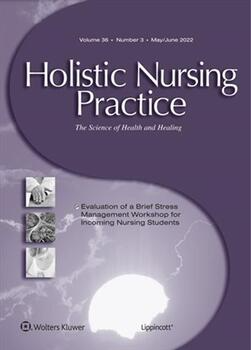
Animal Study
Curcumin's potential anxiolytic and antidepressant impacts do not significantly alter behavior or interact with the benzodiazepine site of the gamma-aminobutyric acid receptor A.
Ceremuga TE, Helmrick K, Kufahl Z, Kelley J, Keller B, Philippe F, Golder J, Padrón G
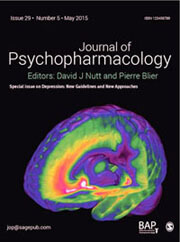
Review Article
Curcumin, a component of Indian spice turmeric, presents a potential natural treatment for depression, influencing neurotransmitters and protecting against several biological systems compromised in depression.
Lopresti AL, Hood SD, Drummond PD
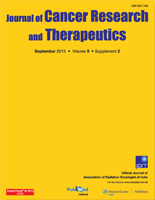
Review Article
Cumin and caraway seeds have shown diverse medicinal applications, thanks to their rich essential oils, as revealed by recent experimental studies.
Johri RK
Executive Summary
Write an executive summary in the form of a blog article on the topic of "Research into Chinese medicine treatment for Cumin" summarising the research below and using language that can be easily understood by patients and avoiding medical jargon using a professional and caring tone of voice.
Write an executive summary in the form of a blog article on the topic of "Researched Chinese medicine treatments for Cumin" summarising the research below in an objective and easy to understand way, and using language that can be easily understood by patients. Group the article into Chinese medicine treatments first, followed by nutrition and other treatments. Avoid using medical jargon and use a professional and caring tone of voice.
Write me a concise but easy to understand executive summary on the topic of "Chinese medicine treatments for Cumin" based on the following research that I will give you. Your summary should be 2 paragraphs long in Australian English spelling and include references to the studies.
A Review Article published in 2023 in the journal Reference Series in Phytochemistry found that Through innovative refinement, nanocurcumin, evolved from turmeric's primary component curcumin, has improved characteristics and pharmaceutical potential, particularly in drug delivery systems. The methodology of the research involved analyzing the cultivation, storage, and surrounding environmental factors crucial to turmeric production, such as soil condition and climate. This was intertwined with investigations into the chemical composition of turmeric, focusing mainly on curcumin, its main component. Moving forward, the study then evaluated curcumin analogs and formulations, leading to a deep dive into the relatively new development of nanocurcumin. The discussion of the research results revealed several interesting findings. Firstly, turmeric exhibited a variety of useful properties, highlighting its role in traditional medicine and livelihood in Indian tribes. Most importantly, the research concluded the impressive potential of nanocurcumin. This altered form of curcumin showed not only enhanced characteristics but also possible applications in the pharmaceutical field, specifically for drug delivery systems.
A Systematic Review published in 2022 in the journal Iranian Journal of Public Health found that The application of curcumin and turmeric, due to their anti-inflammatory effects, can alleviate symptoms and improve the quality of life in people with irritable bowel syndrome. The research was conducted by conducting a systematic review of all available evidence regarding the therapeutic potential of curcumin and turmeric for relief from irritable bowel syndrome symptoms. Database searches were undertaken across various reputable sources, namely Web of Science, Pub-Med, Scopus, Ovid, Embase, and Google Scholar. The terms used for this search included 'curcumin', 'turmeric', and 'IBS'. The timeline for these studies spanned from 1990 to February 2021. The focus was particularly placed on clinical trials, from which nine relevant articles were gathered for data analysis. The results from the gathered literature showed that curcumin and turmeric, used alone or combined with other medications, could positively impact the severity of irritable bowel syndrome. This was particularly apparent with symptoms such as abdominal pain, leading to an overall improvement in life quality for people dealing with irritable bowel syndrome. This improvement is attributed to the anti-inflammatory effects of curcumin and turmeric.
A Review Article published in 2022 in the journal Acta Biomedica found that Dietary supplements are found to be a promising complementary treatment for endometriosis, thanks to their anti-inflammatory, anti-oxidant, and immune modulatory characteristics. The researchers conducted a comprehensive literature review and synthesized the effects of various dietary supplements. The list of supplements includes vitamin D, zinc, magnesium, omega 3, propolis, quercetin, curcumin, N-acetylcysteine, probiotics, resveratrol, alpha lipoic acid, vitamin C, vitamin E, selenium, and epigallocatechin-3-gallate. These were studied due to their known anti-inflammatory, anti-oxidant, anti-proliferative, and immune modulatory characteristics. In terms of discussion on the results, the findings from the comprehensive literature review, encompassing in vitro, animal and human studies, show that there might be significant potential for dietary supplements as a complementary treatment to conventional therapy for endometriosis. Each supplement displayed attributes contributing to the mitigation of endometriosis symptoms, whether it was through anti-inflammatory means, antioxidant effects, immune modulation or their anti-proliferative properties. Despite variations between different kinds of supplements, the overall consensus indicates these function as a helpful add-on in managing the disease.
A Review Article published in 2022 in the journal Graefe's Archive for Clinical and Experimental Ophthalmology found that Curcumin, a spice used in Indian cooking, shows potential therapeutic effects in various retinal diseases, including during the COVID era. The research used PubMed and MEDLINE databases to examine a wide range of studies pertaining to the role of curcumin in various retinal diseases and its use during the COVID era. Specific diseases investigated include diabetic retinopathy, age-related macular degeneration, retinitis pigmentosa, retinal ischemia reperfusion injury, and proliferative vitroretinopathy. In these studies, curcumin's performance was tested in different experimental models, where it demonstrated pleiotropic effects through its action on various cell types like HRPC, HREC and ARPE-19. The research also evaluated the molecule's impact on retinal endothelial cells and its ability to inhibit actions of certain proteins and genes implicated in retinal disease. Moreover, the search also included curcumin's influence in the COVID-19 landscape. Discussing the results, curcumin proved efficacious in retinal disease management by increasing antioxidant enzymes, reducing inflammatory mediators, and inhibiting growth factors. In the context of diabetic retinopathy specifically, curcumin acted by reducing Reactive Oxygen Species (ROS) and inhibiting apoptosis-inducing proteins. Furthermore, curcumin downregulated several inflammatory molecules and hindered retinoblastoma cell proliferation, migration, and apoptosis. In the COVID era, curcumin showcased its potential by inhibiting viral replication and cytokine storm.
A Systematic Review published in 2021 in the journal Complementary Therapies in Medicine found that Turmeric curcuminoids are associated with better pain relief than NSAIDs in knee osteoarthritis. The meta-analysis results showed that curcuminoids were significantly more effective than comparators regarding visual analogue scale (VAS) and Western Ontario and McMaster Universities Arthritis Index (WOMAC) pain scores. However, no significant difference in pain relief or AEs between the high-dose (daily dose ≥1000 mg or total dose ≥42 gm) and low-dose (daily dose <1000 mg or total dose <42 gm) curcuminoid treatments was observed. When comparing curcumininoids versus NSAIDs, a significant difference in VAS pain was found. For AE analysis, three of our included studies used NSAIDs as comparators, with all reporting higher AE rates in the NSAID group, though significance was reached in only one study.
A Randomised Controlled Trial published in 2021 in the journal Phytotherapy Research found that Curcumin supplements have comparable effects to placebos in alleviating symptoms of Premenstrual Syndrome and dysmenorrhea in young women. In the methodology of this study, a randomized, triple-blinded, placebo-controlled trial was carried out. Women who were affected by both Premenstrual Syndrome and dysmenorrhea were enrolled and randomly assigned to either the curcumin or placebo group. Participants were given a capsule, containing either 500mg of curcuminoid or a placebo, once daily, starting from 7 days before menstruation and continuing till three days after menstruation. This was maintained for three continuous menstrual cycles. As per the results, upon the completion of the trial, both the curcumin and placebo groups witnessed a significant decrease in the severity of Premenstrual Syndrome and dysmenorrhea symptoms, as evident by a decrease in the scores of the Premenstrual Syndrome Screening Tool and the visual analog scale. Therefore, curcumin was found to have similar effects to the placebo, in terms of relieving symptoms of both Premenstrual Syndrome and dysmenorrhea.
A Review Article published in 2021 in the journal Journal of the Science of Food and Agriculture found that Curcumin, derived from turmeric, exhibits an extensive range of biological and medicinal properties, including anti-inflammatory, antioxidant, and antifungal qualities. The research examines turmeric extracts, specifically focusing on curcumin, a yellow biocomponent. An array of its medicinal and biological properties is explored, particularly anti-inflammatory, antioxidant, and antifungal attributes. Traditionally used in various cultures for a range of health issues like inflammation, cough, wounds, liver disorders, and cancers, curcumin's extensive application in treating a variety of diseases potentially positions it as a significant component in modern medicine. The study also notes the successful tolerance of curcumin at high doses with no adverse effects. The analysis extends to the preferred methods for the encapsulation of curcumin, detailing techniques such as nanocomplexing, gelation, complex coacervation, electrospraying, and solvent-free pH-driven encapsulation. These methods have demonstrated effectiveness in encapsulating curcuminoids. Moreover, the chemical traits of curcumin are also highlighted, providing a basis for further potential applications in the development of health-promoting functional products.
A Review Article published in 2021 in the journal Clinical Ophthalmology found that Curcumin, with its anti-inflammatory, antioxidant, antimicrobial and antimutagenic properties, is a potential therapeutic agent for retinal diseases. This review paper uses various pieces of research from the literature to detail the characteristics of curcumin, a molecule produced by plants. The paper particularly focuses on the beneficial and controversial aspects of curcumin. It talks about the retina's susceptibility to oxidative stress due to its cell composition and constant exposure to photons, highlighting that retinal ganglion cells and photoreceptors are particularly sensitive to oxidative damage. The paper also points to studies that link an imbalance in reactive oxygen species to a wide range of retinal diseases. In the discussion of results, it is stated that a number of studies suggest that curcumin can be well tolerated by humans when taken orally and does not tend to have negative effects, making it a promising candidate for retinal disease treatment. However, a primary limitation is curcumin's poor bioavailability; the body can only absorb a small fraction of the substance as an active compound. Despite that, efforts have been made to improve curcumin's accessibility to target tissues in sufficient quantities.
A Review Article published in 2021 in the journal Molecules found that Green tea, coffee, wine, and curry have beneficial health effects due to the polyphenols they contain, which possess both antioxidant and pro-oxidant properties. The research leverages epidemiological studies, clinical trials, cell-based studies and animal tests to examine the effects of green tea, coffee, wine, and curry -- and their key polyphenols -- on human health. The polyphenols investigated include epigallocatechin gallate in green tea, chlorogenic acid in coffee, resveratrol in wine, and curcumin in curry. The study concentrates on the workings of these polyphenols, primarily focusing on reactive oxygen species (ROS), and how they perform both anti- and pro-oxidant functions, fundamentally influencing different enzymes and factors with health contributions. In the discussion of the results, it is mentioned that the anti-oxidative actions of these polyphenols assist in the scavenging of ROS and the downregulation of the nuclear factor-κB, yielding beneficial anti-inflammatory effects. Conversely, their pro-oxidant actions appear to elevate ROS production, encouraging the activation of 5'-AMP-activated protein kinase that regulates different enzymes and factors for health improvement. However, the exact mechanism of how these polyphenols exhibit either pro- or anti-oxidant effects remains unclear. Also, the research underscores that while many studies note their health benefits, some others show no positive effects on health conditions such as obesity, suggesting that outcomes could be influenced by various study factors.
A Animal Study published in 2018 in the journal Life Sciences found that Curcumin, found in turmeric, exerts anticonvulsive effects by elevating serotonin levels, influencing certain receptors, and possibly reducing 5-HT7 gene expression. In the experiment, 110 mice were partitioned into 11 groups. Curcumin and serotonin's roles were examined in the first four groups, employing curcumin and PCPA to deplete brain serotonin levels. The fifth group was treated with four different substances followed by curcumin. The sixth group was given NAD-299, then curcumin. The other groups, seven to eleven, received various antagonists along with curcumin. A convulsant (PTZ) was injected into all mice after administering curcumin. Key observations included that serotonin depletion reversed some of curcumin's anticonvulsant effects. Different serotonin receptor antagonists had distinct influences on the effectiveness of curcumin. Lastly, a reduction in 5-HT7 gene expression was noted following curcumin injection, supporting a potential mechanism for its anticonvulsive action.
A Animal Study published in 2017 in the journal Holistic Nursing Practice found that Curcumin's potential anxiolytic and antidepressant impacts do not significantly alter behavior or interact with the benzodiazepine site of the gamma-aminobutyric acid receptor A. In this study, a prospective, between-subjects group design was employed. The subjects were 55 male Sprague-Dawley rats randomly split into five groups, each given different intraperitoneal injections: a control group, curcumin, curcumin with flumazenil, midazolam alone, and midazolam with curcumin. Behavioral observations were conducted with the aid of the elevated plus maze, open field test, and forced swim tests. A two-tail multivariate analysis of variance was deployed for data analysis. The results showed that, according to the behavioral tests, curcumin did not generate any notable signs of anxiety-relieving or mood-lifting effects. It was also noticed that curcumin didn't show any interactive tendencies with the GABAA receptor's benzodiazepine site. The team therefore concluded that curcumin didn't produce any significant outcomes on these aspects of mental health modulation as was purposed in the initial hypothesis.
A Review Article published in 2012 in the journal Journal of Psychopharmacology found that Curcumin, a component of Indian spice turmeric, presents a potential natural treatment for depression, influencing neurotransmitters and protecting against several biological systems compromised in depression. The research methodology involved an extensive review of the varying influences and effects of curcumin on systems implicated in depression. These included neurotransmitter systems like serotonin and dopamine which are critical to mood regulation. The study also explored the effects of curcumin on hypothalamus-pituitary-adrenal disturbances, famously associated with stress response and mood disorders. In terms of results, curcumin demonstrated promising potential as an antidepressant in animal models of depression. Additionally, it was found to help moderate damage to neurological systems and intestinal permeability, both of which are often compromised in major depressive disorders. It also exhibited properties that could help lower inflammation and protect against oxidative stress and mitochondrial damage. Together, these findings position curcumin as a promising natural treatment for depression.
A Review Article published in 2011 in the journal Journal of Cancer Research and Therapeutics found that Cumin and caraway seeds have shown diverse medicinal applications, thanks to their rich essential oils, as revealed by recent experimental studies. The reported study focuses on extensively researching Cuminum cyminum and Carum carvi, known as cumin and caraway seeds respectively. These seeds have historical usage in various traditional healing systems across different geographies. The research involves closely studying their chemical composition, primarily their richness in essential oils, and investigating their biological activities. The discussion of results outlines the various novel bioactivities of cumin and caraway seeds that have emerged from the extensive experimental studies. The research validates the acclaimed medicinal attributes of these seeds that have enhanced their significance as a potential source of diverse natural products. Though the abstract doesn't provide specific details, it points to an array of medicinal applications, underscoring the potential for cumin and caraway seeds in medical and therapeutic use.
Moderation Tools
Topic
Sign In
Users not signed in are limited to viewing the 5 most recent items of content.